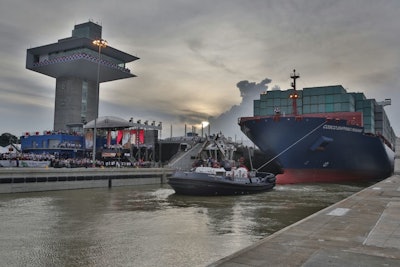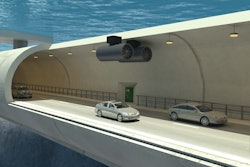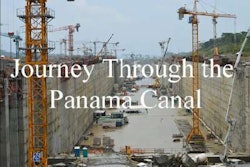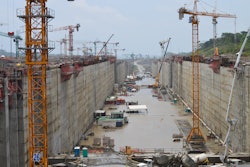
The Expanded Panama Canal is now officially open for business.
During the official inauguration ceremony, Panamanian President Juan Carlos Varela and Panama Canal Administrator and CEO Jorge L. Quijano spoke to a crowd of more than 25,000 Panamanians, Canal employees, heads of state and dignitaries from around the world, Canal customers, shipping and trade executives, and nearly 1,000 journalists. This is the first expansion of the waterway since its original construction.
Construction of the new Expanded Panama Canal
“More than 100 years ago, the Panama Canal connected two oceans. Today, we connect the present and the future,” said Mr. Quijano speaking to the people of Panama. “It is an honor to announce that what we did it together: providing this great connection to the world. This is the beginning of a new era.”
Video: Journey Through the Panama Canal
“Canal users can be assured that we’ll continue to support the Panama Canal Authority and our port operators to provide them a world class service and strengthen our logistics system by creating the necessary incentives and conditions to give added value to our inter-oceanic route,” said Panamanian President Varela.
The inaugural transit began with the passage of Neopanamax vessel COSCO Shipping Panama through the Agua Clara Locks on the Atlantic side of the country and concluded with its transit through the Cocoli Locks on the Pacific side. The ship is en route to Asia.
Considered and analyzed with more than 100 studies, the Expansion will provide greater economies of scale to global commerce. It will introduce new routes, liner services and segments such as liquefied natural gas (LNG).
“We are thrilled that we currently have 170 reservations for Neopanamax ships, commitments of two new liner services to the Expanded Canal, and a reservation for the first LNG vessel, which will transit in late July,” Mr. Quijano added. “Our customers care that their supply chain is reliable and that they have a diversity of shipping options. And the Canal has always been reliable; today, we offer the world new shipping options and trade routes.”
The Expansion Program is the Canal’s largest enhancement project. In 2006, more than 75% of Panamanians approved the project in a nationwide referendum, and, in 2007, construction of the $5.25 billion project began. It included the construction of a new set of locks on the Atlantic and Pacific sides of the waterway and the excavation of more than 150 million cubic meters of material, creating a second lane of traffic and doubling the cargo capacity of the waterway.
In 2015, the original Canal set a tonnage record, transiting 340.8 million PC/UMS. It will continue to operate, transiting Panamax-sized vessels or smaller. While the Expansion’s locks are 70 feet wider and 18 feet deeper than those in the original Canal, they use less water due to water-savings basins that recycle 60% of the water used per transit.
In line with its commitment to customer service, the Panama Canal will continue to provide the world with value for another century and beyond.





![[video] Construction Starts 12% Below 2015](https://img.forconstructionpros.com/files/base/acbm/fcp/image/2016/07/default.577e65fa36247.png?auto=format%2Ccompress&fit=crop&h=167&q=70&w=250)













